A research team from the Chair of Production Engineering of E-Mobility Components (PEM) at RWTH Aachen University has conducted a comparative analysis of traction batteries from Tesla and BYD, reporting “surprising results” with new insights into their structure and efficiency.
PEM noted that detailed data on modern electric vehicle batteries is scarce, particularly for Tesla and BYD, which have disclosed limited information about their battery technologies. “Both players have only ever revealed little data about their batteries, so the cells’ mechanical structure and most of their properties have remained hidden to date,” said PEM Director Professor Achim Kampker.
See also: RWTH Aachen-Led Project Aims to Improve Cooling Systems in Electric Motor Production
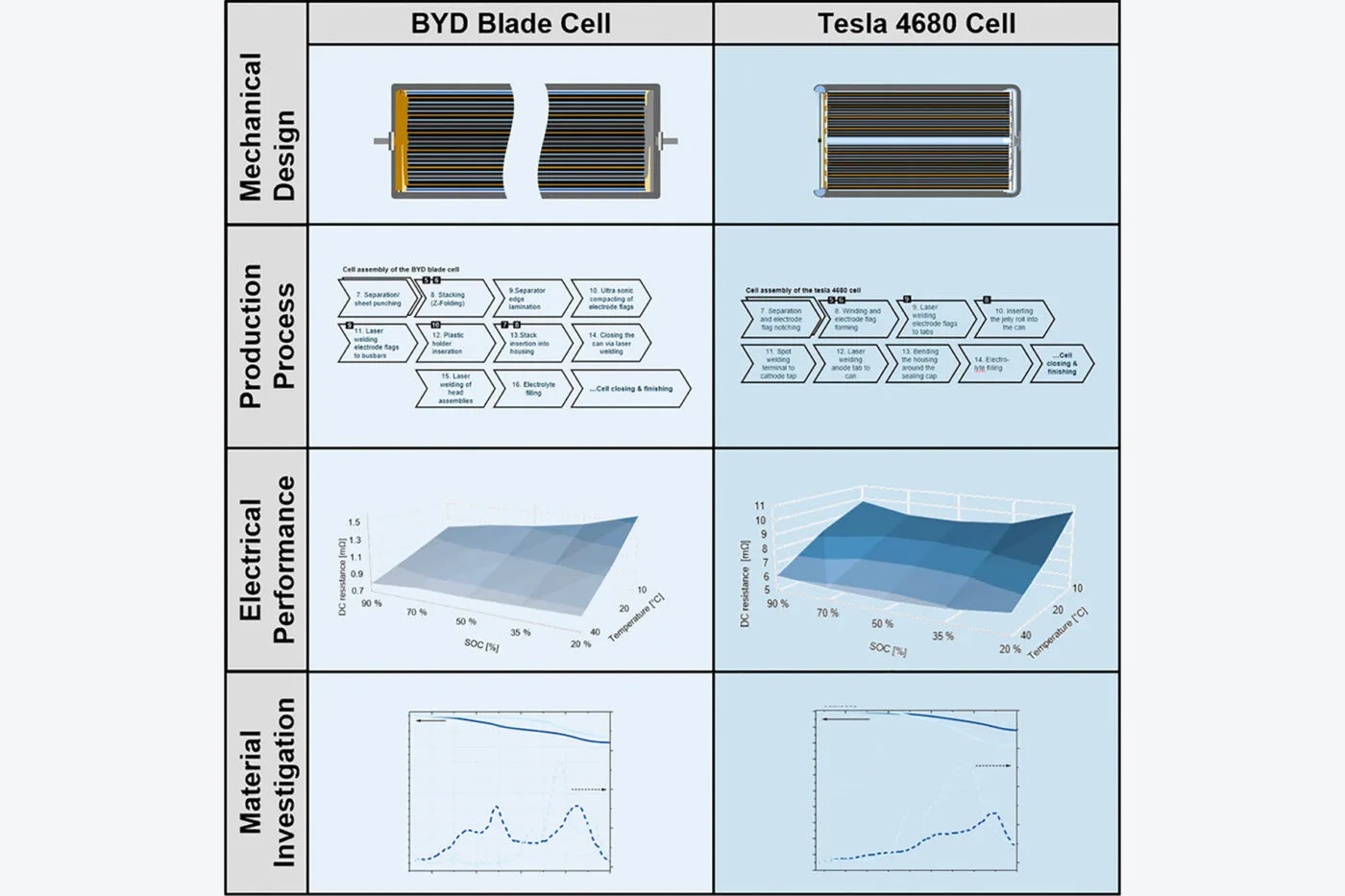
The findings, published on March 6 in the journal Cell Reports Physical Science, reveal distinct design priorities. Tesla’s 4680 cells prioritize high energy density, while BYD’s Blade battery emphasizes volume efficiency and cost-effective materials. The study highlights that BYD’s battery design enables simpler thermal management, improving overall efficiency.
Researchers examined the mechanical construction, dimensions, electrical and thermal properties, and material composition of the electrodes. Additionally, they analyzed the costs of materials and assembly processes. The Tesla cell was obtained through Munro & Associates from a dismantled 2022 Tesla Model Y with a structural battery pack, while the BYD Blade cell was imported from a Chinese supplier in 2023 with a 100% State of Health (SoH).
See also: RWTH Aachen Completes Research on Second-Life EV Battery Storage Systems
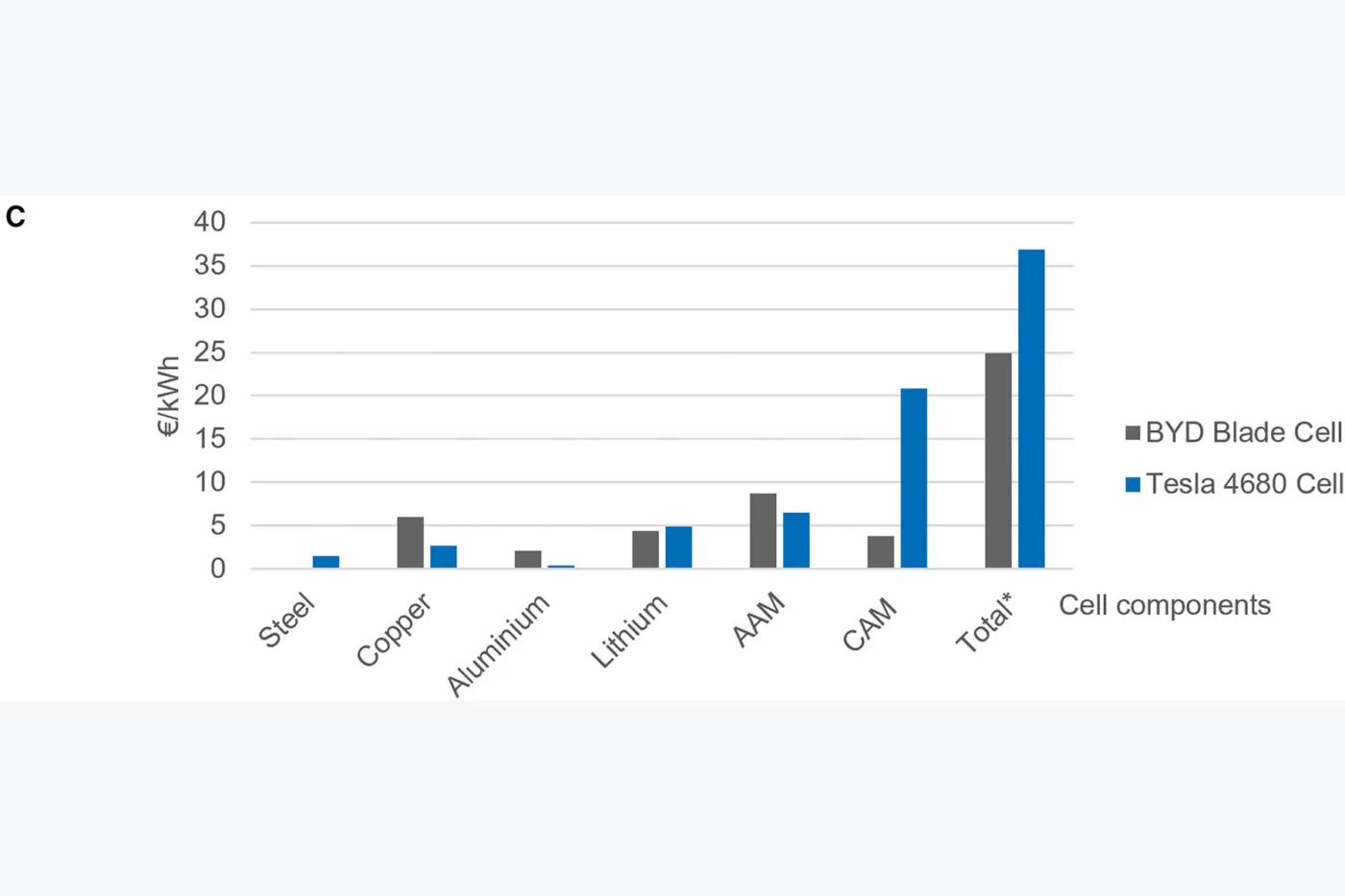
A key unexpected finding was the absence of silicon in the anodes of both batteries. “We were surprised that there is no silicon in the anodes of both batteries – especially in Tesla’s cell, as silicon is widely regarded in research as a key material for increasing energy density,” said Professor Heiner Heimes, a lead researcher on the study. The study determined the energy density of BYD’s lithium iron phosphate (LFP) cell at 160 Wh/kg and 355.26 Wh/l, while Tesla’s cylindrical 4680 cell with nickel-manganese-cobalt (NMC811) chemistry achieved 241.01 Wh/kg and 643.3 Wh/l, reinforcing Tesla’s focus on volumetric energy density.
BYD’s Blade cell, notable for its long, prismatic form, measures 90 mm in height, 14 mm in width, and 965 mm in length. Tesla’s 4680 cylindrical cells, evolving from earlier 18650 and 2170 formats, feature a 46 mm diameter and an 80 mm height. “In recent years, there has been a trend towards cells with larger dimensions, as this increases the energy content per cell produced and reduces integration complexity at the system level,” the study noted.
See also: RWTH Aachen University Launches “DRivE” Project for Electric Truck Route Planning
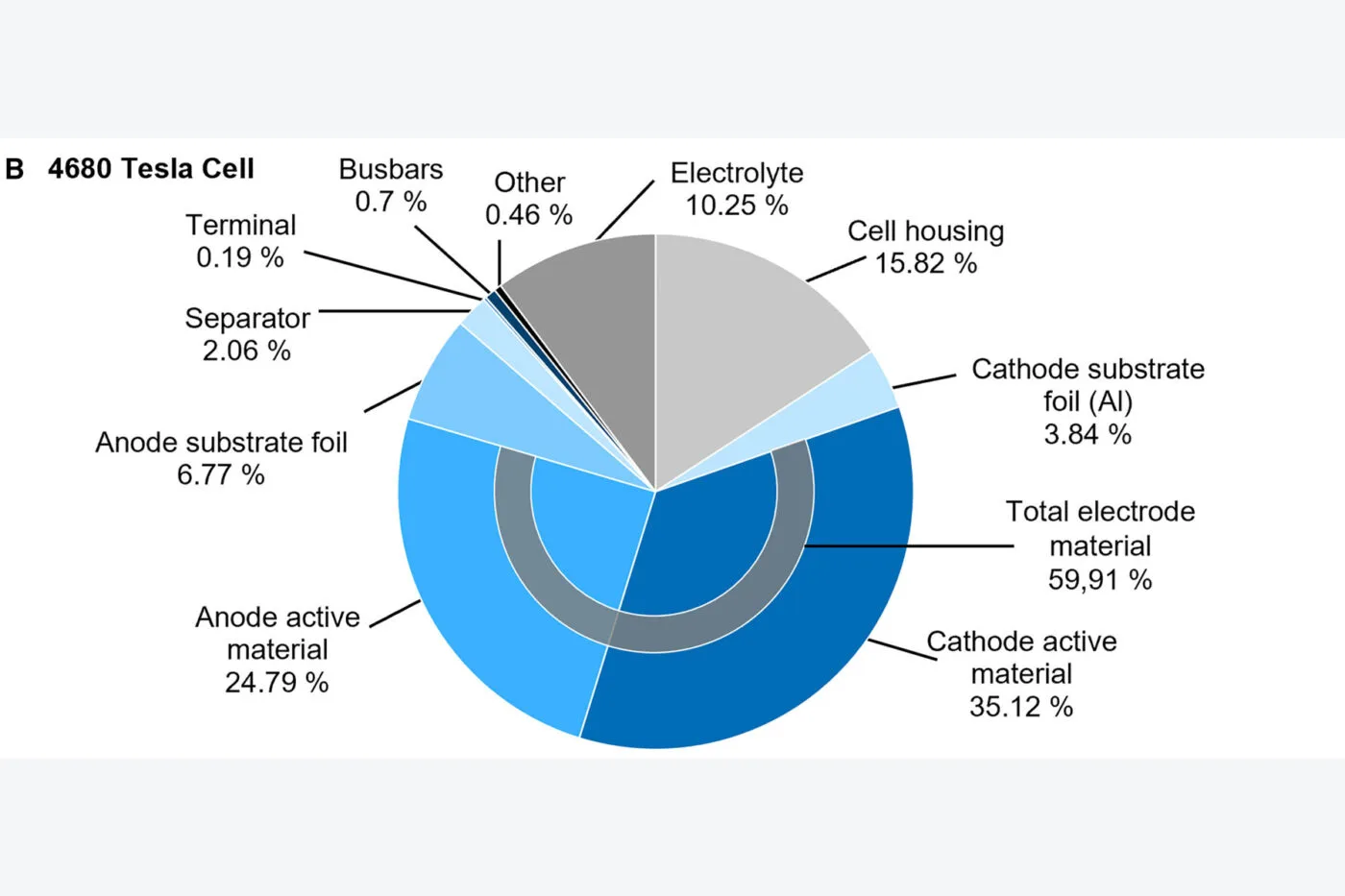
Another unexpected similarity was the use of laser welding to join thin electrode foils, a method less common than ultrasonic welding. However, the differences between the batteries outweighed their similarities. The study identified significant variations in charge and discharge speeds relative to maximum capacity. BYD’s design laminates separator edges to optimize anode-cathode positioning, while Tesla employs a novel binder to hold active electrode materials together.
Safety mechanisms also differ. Tesla’s 4680 cells are positioned upright in the pack, allowing fault-induced gas venting downward, away from electrical connections. BYD’s Blade cells vent to the side, similar to Tesla’s horizontally mounted 18650 and 2170 cells. Tesla’s design integrates the entire cell casing as the negative pole, while BYD insulates both poles.
See also: RWTH Aachen University’s PEM Advances Battery Technology Collaborations with HYNN and BST
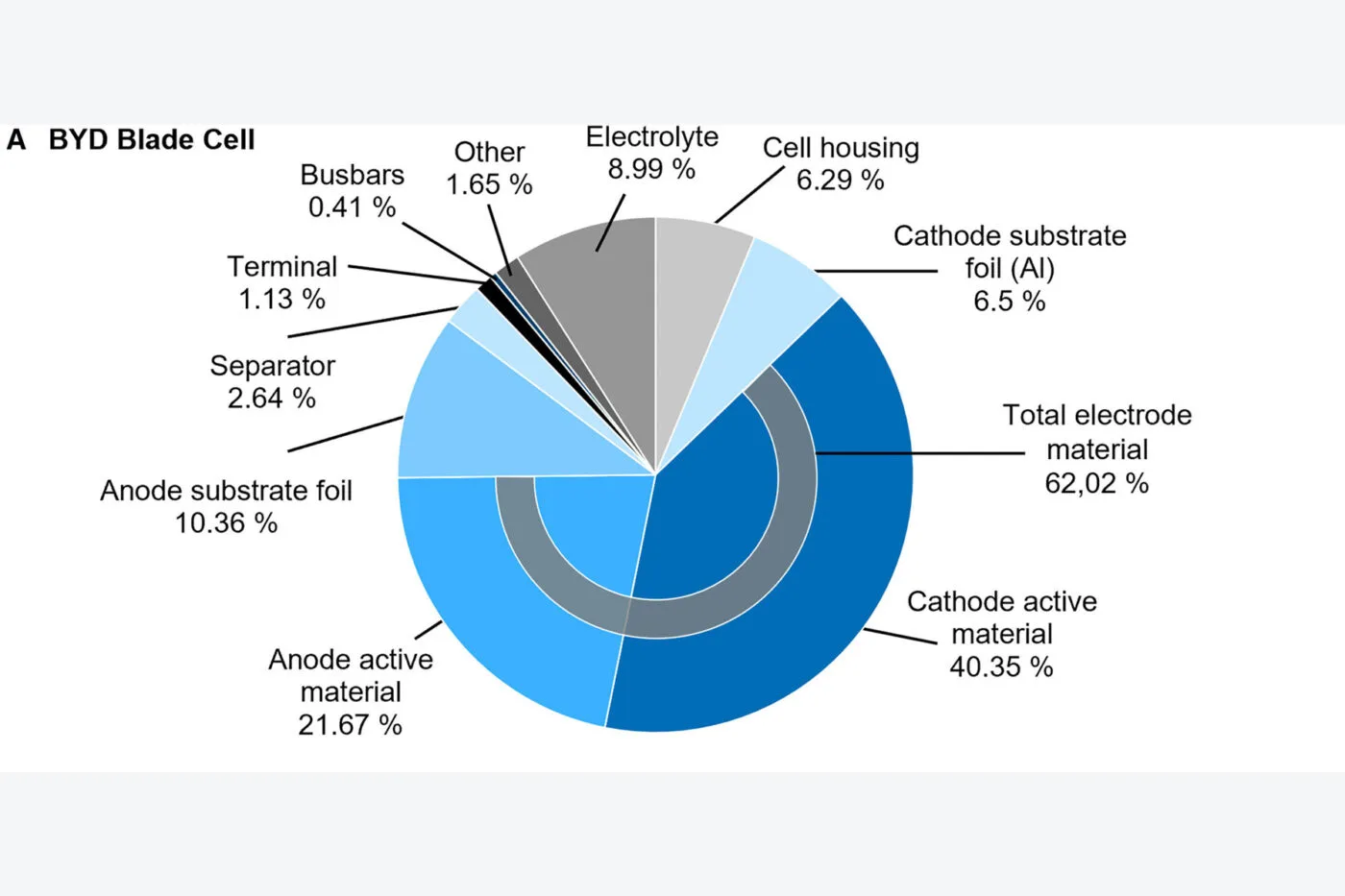
Cost analysis revealed that active material accounts for approximately 60% of both batteries, though distributed differently. Tesla’s steel housing is heavier than BYD’s aluminum container, but the Blade cell’s substrate film adds weight. Based on August 2024 material prices, BYD’s cell costs approximately €25/kWh, over €10/kWh cheaper than Tesla’s at more than €35/kWh. The primary cost difference stems from the cathode material, though BYD’s anode and copper components are slightly more expensive.
The study, conducted with support from Münster Electrochemical Energy Technology (MEET) and the Fraunhofer Institute for Ceramic Technologies and Systems (IKTS) under the FoFeBat2 research project, is available as a free download. It includes further details on electrode structure, cell contacting, and production process sequences.
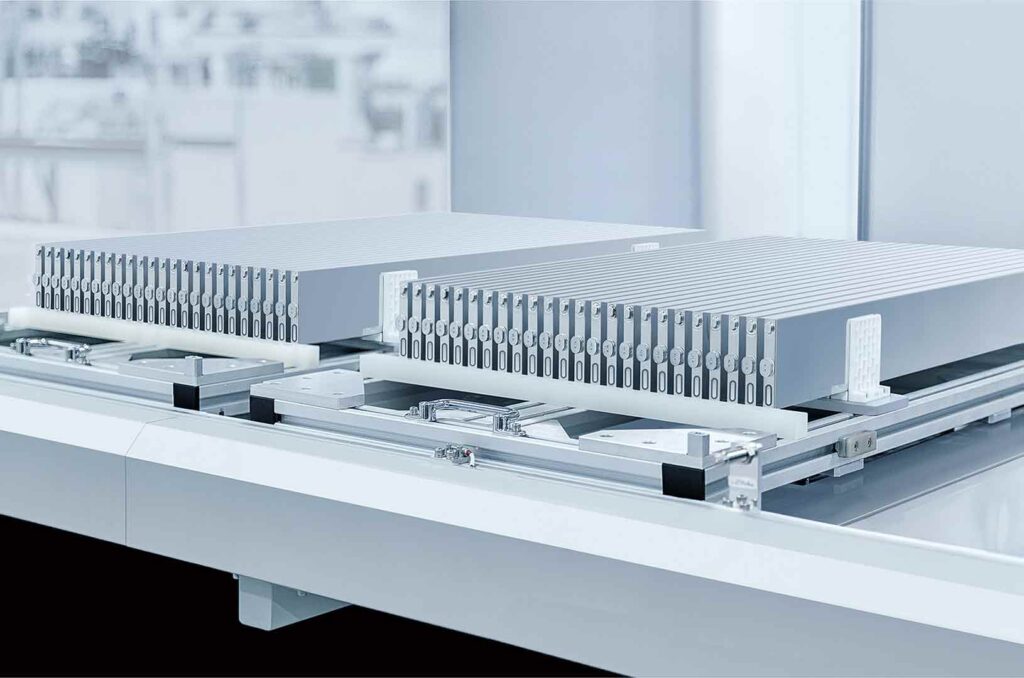
1 Comment
As far as I am aware, Tesla chose to use the ubiquitous cheap and reliable cylindrical cells used in small electrical applications everywhere, rather than trying to develop cells specifically for an EV. Other manufacturers such as Nissan, developed their own cells more akin to a blade design with much fewer cells. Tesla battery packs use thousands of those cylindrical cells making construction, and the BMS very complex and expensive along with any maintenance. Blade cell packs tend to have only a few hundred cells making assembly, the BMS, and refurbishing, a much more simple affair. Tesla have evolved to use larger cells, but have taken the route defined by their original starting point. I think that eventually Tesla will have to use blade cells like everyone else, as they are much more suited to EV manufacture and maintenance.